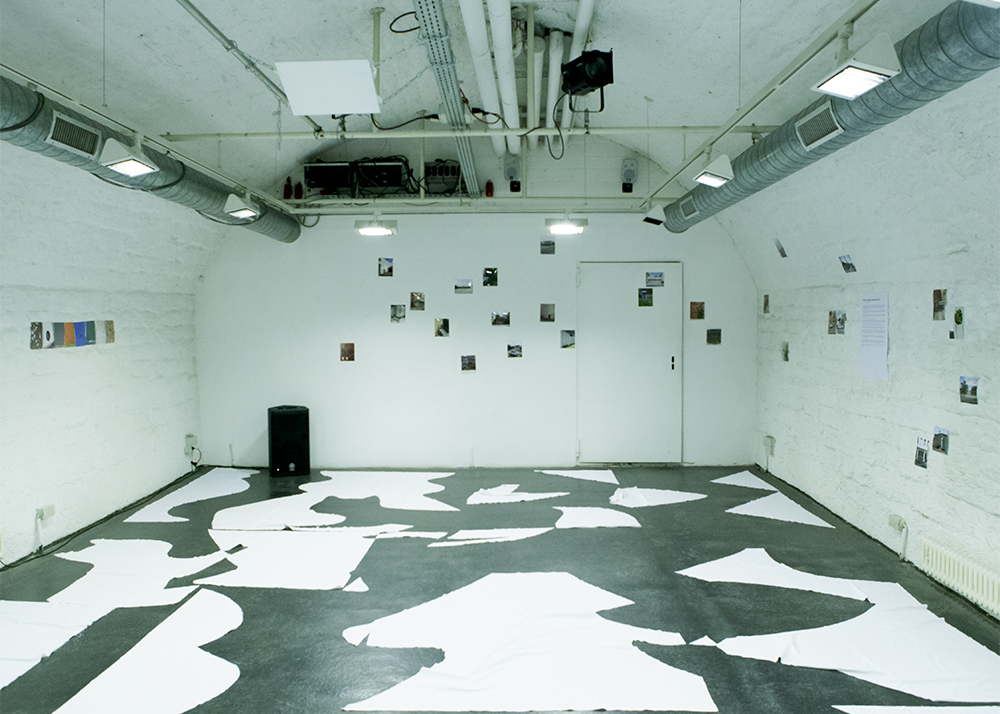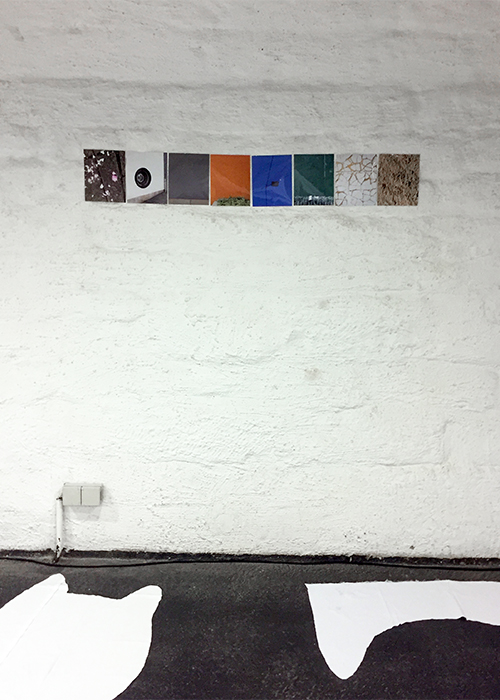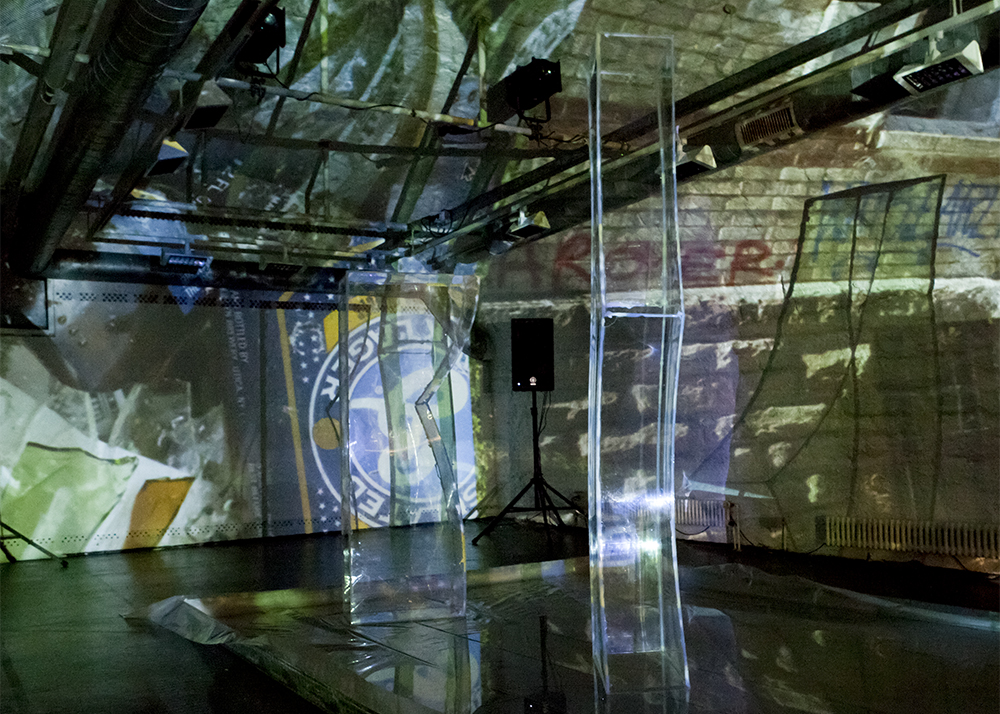Presented on October 14, 2017, “Pigments” invited visitors to contemplate the largely forgotten but interrelated histories of two distant locations and their resonances across space and time. The performance/installation included a five-hour live sound mix, generative video projection, photographic documentation, and texts. The event took place as part of the city-wide Stuttgartnacht festival at Kunstraum 34.
The point of departure for the evening was G. Siegle & Co., a company that became successful in the 19th century by manufacturing aniline pigments. Operating a factory in Stuttgart-West near the intersection of Rotebühlstrasse and Hasenbergstrasse, the firm merged with BASF in 1873. G. Siegle & Co later regained its independence, though in 1970 it was finally ingested by the chemical behemoth once and for all. Traces of the original factory have largely disappeared, and the site is now home to the Kaufmännische Schule 1 and Wirtschaftsgymnasium West.
In an effort to expand its business into the American marketplace, G. Siegle & Co. opened a factory in the Rosebank neighborhood of Staten Island, New York City, in 1907. As a result of American suspicion of German nationals during World War I, however, the United States government seized the complex from its owners and parceled it off to an American company. The factory continued producing pigments until 2008, when the Sun Chemical Company closed it for good on account of plummeting profitability. It was subsequently bulldozed and the large lot currently sits vacant, covered by layers of dirt and stones, awaiting the construction of new condominiums.
“Pigments” used these locations as source material for a sound performance and mixed media installation. Field recordings were made in and around both sites and the sounds were edited, processed, and mixed live. The performance also included photographs made during these scouting trips, as well computer-generated projections that sample pixel color values from the photographs and create random, ever changing patterns based on them. Finally, articles from the New York Times and Der Spiegel written at the times of the two factories’ declines invited visitors to consider the impact of company politics, globalization, city planning, and environmental damage on urban communities and the people who live and work there.
The performance took place as part of the finissage for Whiteout, a sculptural installation by Annabella Spielmannleitner. “Pigments” interacted with the installation, projecting through her plexiglass sculptures and using the paths made by her “Big Carpet” to guide placement of photo documentation.
Installation Views




Readings
When Pink Pigeons Soared in the Sky
by James Angelos
The New York Times, February 10, 2008
Farbige Bombe
Der Spiegel, July 13, 1970